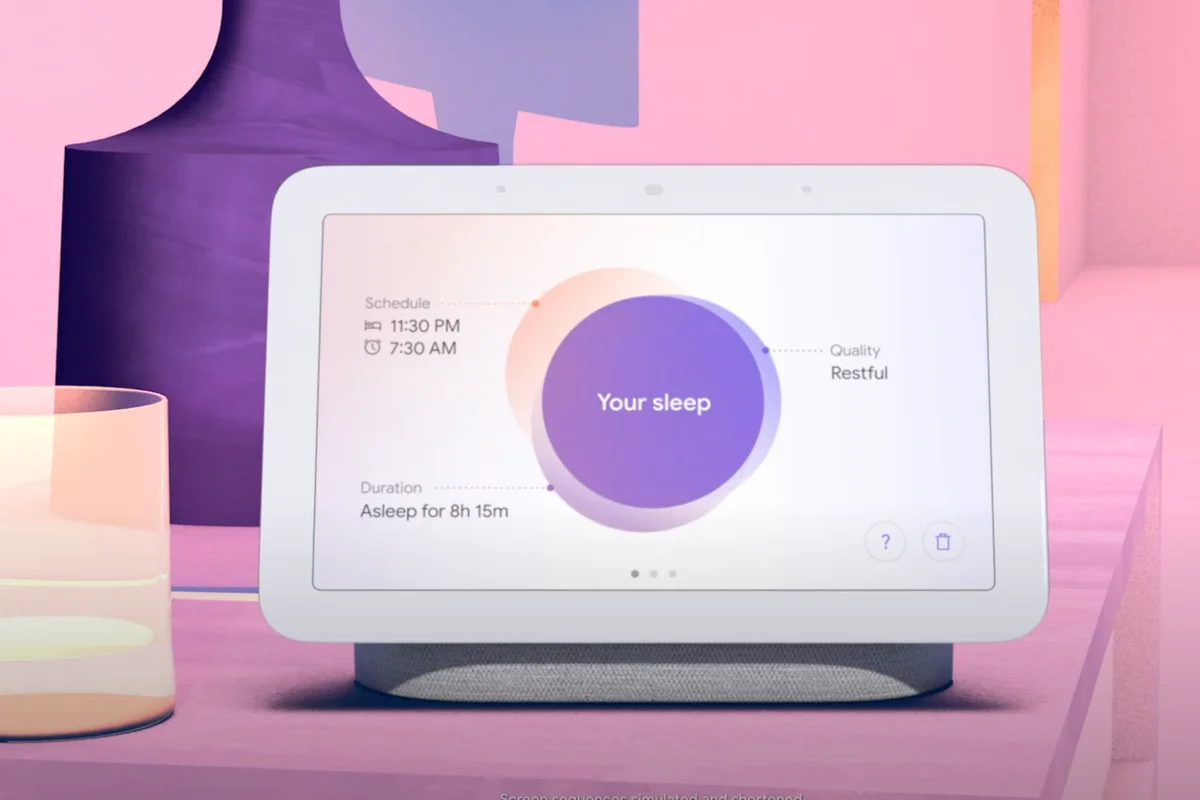
Google
How the new sleep-tracking Nest Hub compares to the original
Google's new Nest display looks the same as before, but can now track your sleep

Google's new Nest display looks the same as before, but can now track your sleep
Google's Nest smart home division has announced a new version of the Hub smart display, featuring sleep tracking technology for the first time. The device first arrived back in 2018 as the Google Home Hub, before turning into the Nest Hub when Google spun off the Nest division. The new model retains the same $99.99 price tag and comes in the same color options of light pink, light gray and dark gray, plus a new pale blue shade called mist.
Read More:
Although the design of the 2021 Nest Hub is almost identical to its predecessor, a small difference is how the bezel is now flush with the display in a bid to make it easier to clean. The touchscreen display remains the same as before, measuring seven inches and having a resolution of 1024 x 600. This means it lacks HD, but given its size and intended use this shouldn't be too much of a concern.
The newly updated Nest Hub is 4.7 inches tall, seven inches wide and 2.7 inches deep, with a weight of 19.68 oz; this makes it the same size but slightly heavier than the original. Google says its enclosure is made from 54 percent recycled plastic. As before, the new Nest Hub does not have a camera. Google instead saves video calling capabilities for the larger Nest Hub Max.
The new Google device comes the same week Apple has announced an end to its production of the original HomePod — one of two smart home devices for its smart assistant, Siri. Conversely, Google has continued to update and push out new smart home speakers and displays, like the Nest Hub, for its voice A.I., Google Assistant.
The newly updated display will also have the same access to Google Assistant as before, along with a simple interface for controlling connected smart home devices like lights, plugs, thermostats and more. The new Nest Hub will also support YouTube videos, as well as photos and weather forecasts, and continue to serve as a music player. To that end, Google has fitted it with the same audio hardware as the Nest Audio smart speaker. This results in 50 percent more bass than on the previous Nest Hub. A new system called Quick Gestures will also let you pause or play content by tapping the air in front of the display, without actually touching it.

Sleep tracking
The major new feature of the 2021 Nest Hub is how it can track your sleep, without relying on any wearables or sensors fitted to your bed. The Nest Hub monitors your movement through the night using its integrated Soli sensor with low-energy radar technology. Soli also briefly featured on the Google Pixel 4 smartphone where it enabled hand-gestures for controlling the phone without touching it. The feature does not appear on the newer Pixel 5.
For the Nest Hub, the Soli sensor powers an opt-in system called Sleep Sensing, which analyzes how the person closest to the display sleeps (assuming it is sat on a bedside table and angled towards the bed). It does this based on their movement and breathing, and uses its microphone to detect sleep disturbances like coughing and snoring, as well as light and temperature changes in the room.
Every morning, the display shows a sleep summary detailing how well (or not) you slept. This details how long you spent in bed, along with times of restlessness, snoring and coughing, as well as changes in light detected by the Nest Hub's ambient light sensor. You can also ask the Google Assistant "how did I sleep?" to see your sleep data, which can be shared with the Google Fit app for iOS and Android.
As well as capturing and displaying sleep data, the system "provides tailored bedtime schedules and personalized suggestions developed by a team of sleep scientists and using guidance from organizations like the American Academy of Sleep Medicine," said Google.
These insights are created after monitoring several nights of sleep, and suggestions aim to highlight notable aspects of your sleep then educate you on why they are important and how you can improve.
Google said the Sleep Sensing system is completely optional and with privacy safeguards in place. A visual indicator is used to show when Sleep Sensing is on, and Google says the Motion Sense system only detects motion, not specific bodies or faces. Audio of coughing and snoring is processed on the device itself and not sent to Google servers, the company said. A physical switch can be used to disable the microphone if you don't wish to use it, and Google said sleep data is not used for personalized adverts.
Sleep Sensing is "available as a free preview until next year," said the company, suggesting it intends to charge for the system at a later date. Google, which also owns Fitbit, also said how it will be "looking for ways to work with Fitbit's sleep-tracking features in the future."
The new Nest Hub is priced at $99.99 and is available to pre-order in the U.S., Canada, UK, Germany, France and Australia now, ahead of going on sale on March 30.
GearBrain Compatibility Find Engine
A pioneering recommendation platform where you can research,
discover, buy, and learn how to connect and optimize smart devices.
Join our community! Ask and answer questions about smart devices and save yours in My Gear.
